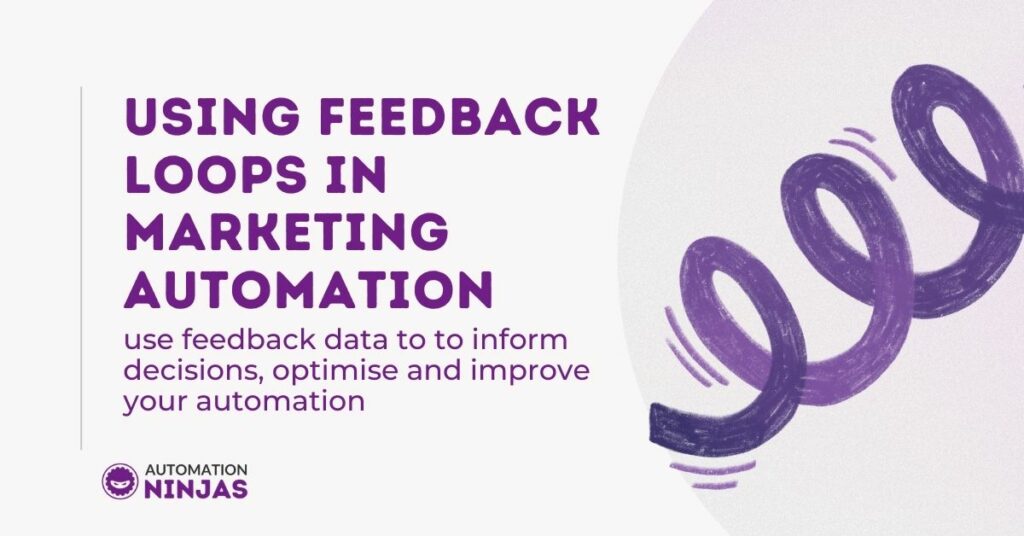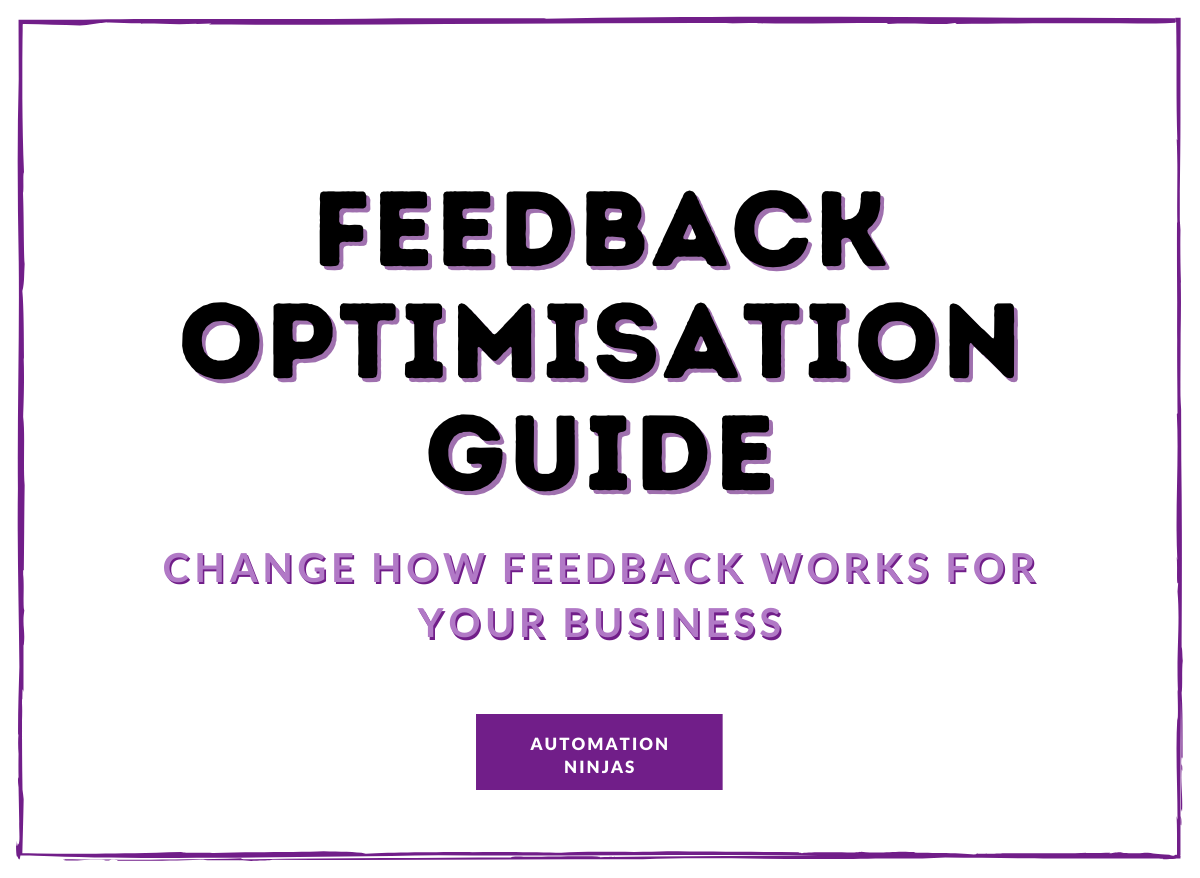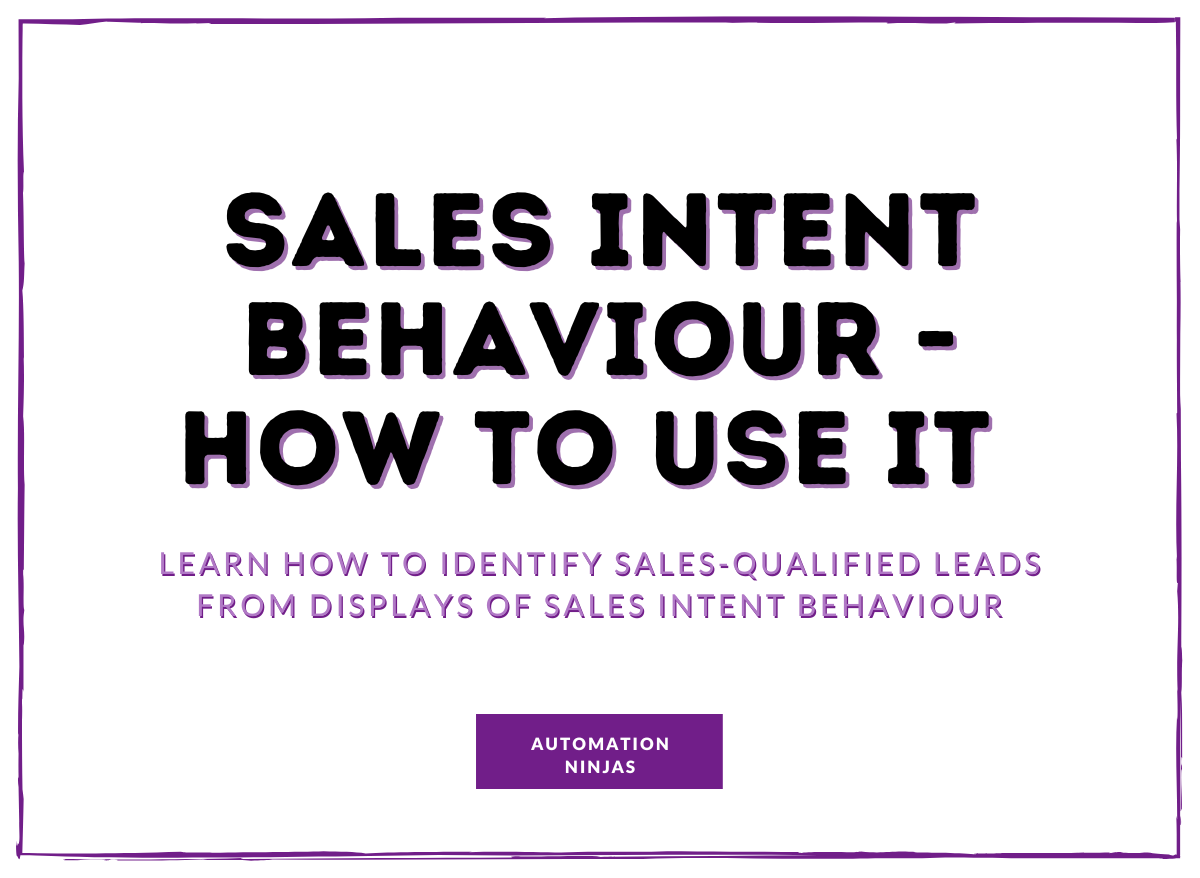When it comes to feedback loops, what you’re going to read here is a little different to what you read elsewhere.
But there are some similarities…
Because we don’t exist in a vacuum…
As much as we’d like to think that we know everything about our product or service, the truth is that the best way to improve and react is to get inside the head of your customers. And one way to do this is via a feedback loop, which allows you to keep your finger on the metaphorical pulse.
In fact, feedback loops are considered a primary driver in marketing automation as you can get immediate feedback, and you can use marketing automation to implement the feedback loop.
So, in this blog, we’re exploring feedback loops, what they are and how to use them to improve your marketing automation.
What are feedback loops?
So firstly, what actually are they? In this case, it’s pretty much what it sounds like…
In marketing, “feedback loops” refer to the process of using feedback gained from customers or potential customers to make improvements to services or products.

How most people utilise them within their businesses is that they gather data on how something performs and optimise.
For example, if you are using Facebook ads, you would analyse how the advert is performing and then tweak and optimise based on the feedback received (which is advert performance/interaction in this case).
As an idea, it's a great principle as you get feedback from people to improve your products, services and procedures.
But, it’s a little redundant - as it’s how all businesses should operate. They should 100% be using feedback to alter whatever is necessary.
However, at Automation Ninjas, we think of feedback loops a little differently - essentially, it’s the same as progressive profiling.
Related content: Behavioural progressive profiling - how to drive demand generation
How does progressive profiling inform the feedback loop?
In essence, behavioural progressive profiling is a form of feedback loop.
If you aren’t familiar with behavioural progressive profiling, you should have read this blog first.
However, here is a quick reminder in case you have forgotten…
Behavioural progressive profiling is learning more about your prospects and customers based on their progressive interactions.
Or… in other words, a feedback loop.
Behavioural progressive profiling helps you understand where your prospects are in the awareness journey - thus allowing you to serve the right content at the right time to move them along the customer journey.
Based on what content they interact with in your long term nurture series - you can determine exactly where they are in the buyer’s journey and serve and tailor the relevant campaigns to them.
This allows us to pre-empt your prospect's needs and fulfil those touch-points necessary to make purchases. It’s a great way to show that you understand your potential customer and build trust with them.
It allows you to determine sales intent and deliver the necessary information at the right time.
Different types of feedback loops
Regardless of what form the feedback loop takes, there is more than one type of feedback loop that you should be aware of, including
- Positive feedback loop
- Negative feedback loop
So let’s look into these in more detail…
What is a positive feedback loop?
In the traditional sense of a feedback loop, positive feedback is anything which supports the action that you are currently taking.
It’s any comments, reviews or communication that tells you what you are doing is resonating with your prospects and customers.
In the traditional sense, a positive feedback loop is a process of analysing this positive feedback and then using it to improve and optimise your product or service.
For example, going back to the Facebook ads example, if the ad was performing well, you might mirror it across different products or add some budget to it.
So, what would this look like in the context of progressive profiling?
If there is content that is being interacted with in the long-term nurture sequence, then this is a sign that it’s the right content, served at the right time and should be kept it. You can then mimic this LTN in a different campaign, as you know it’s working.
It’s different from negative feedback as you are keeping things the same or adding something that is already working.
What is a negative feedback loop?
In comparison, negative feedback signals that something is not going well or that your prospects are not resonating with your offer.
Traditionally, again looking at the Facebook advert, this might mean that your Facebook advert is not performing - maybe there is no reach, or maybe the people it’s reaching aren’t engaging.
This might seem like a bad thing, but negative feedback is hugely valuable for a business and allows you to tweak your offer so that you can refine it and make it more relevant.
In context, this might mean you are serving the wrong content in long-term nurture. As a result, they won’t be consuming, building trust and moving to the next stage in the buyer journey.
This means that you need to alter your long-term nurture series to ensure you are delivering the right content.
Ready to use feedback loops in your marketing automation?
The feedback loop, as you know it, should be incorporated into every aspect of your business. You should be taking on feedback at every stage and using that to optimise and tweak your practices - whether it’s positive or negative.
However, that should be a given - what people are not doing is using behavioural progressive profiling to learn about their prospects, learn what awareness stage they are at and serve them the right content at the right time.
This is a type of feedback loop and one that can be automated to drive demand generation and move people through your buyer journey.
If you need help with setting up a marketing automation feedback loop using behaviour progressive profiling, then get in touch with the team we can help you.





